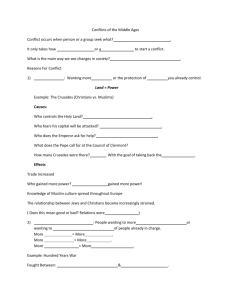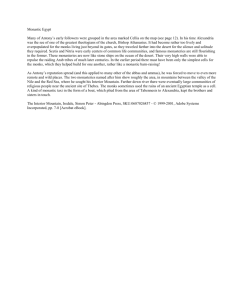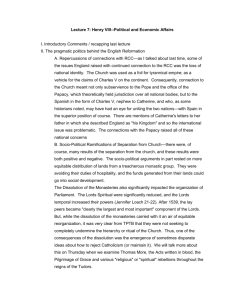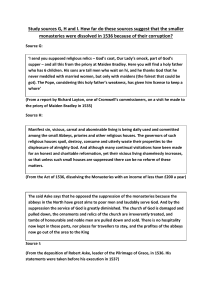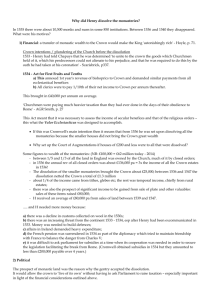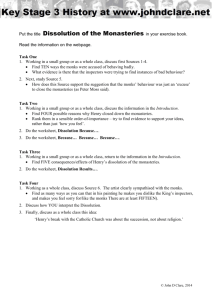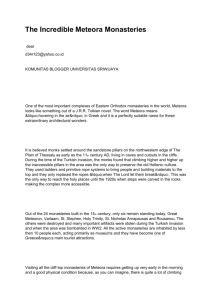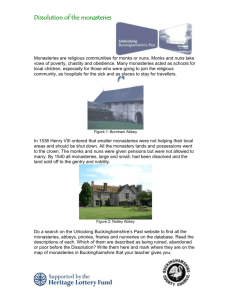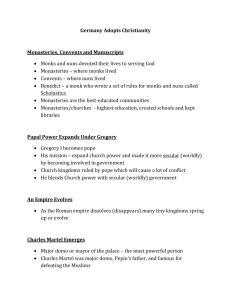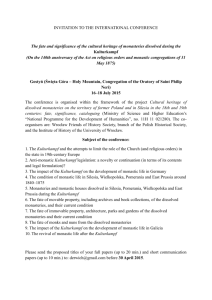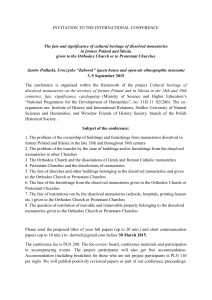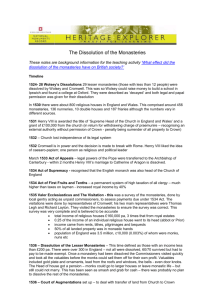The Dissolution of the Monasteries
advertisement
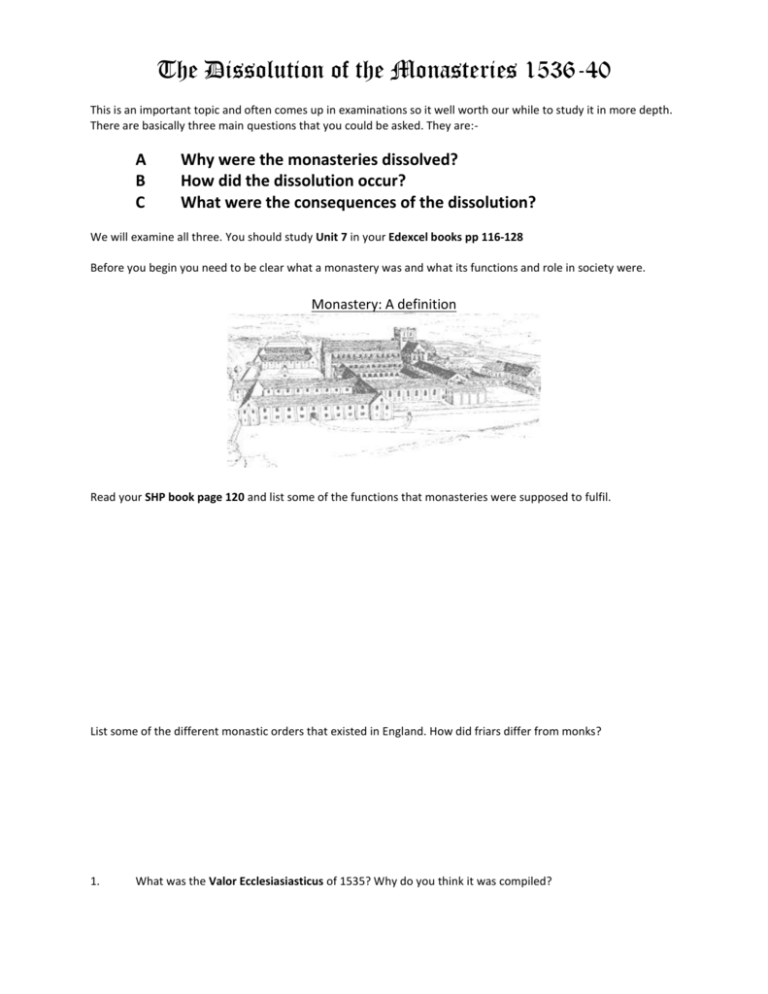
The Dissolution of the Monasteries 1536-40 This is an important topic and often comes up in examinations so it well worth our while to study it in more depth. There are basically three main questions that you could be asked. They are:- A B C Why were the monasteries dissolved? How did the dissolution occur? What were the consequences of the dissolution? We will examine all three. You should study Unit 7 in your Edexcel books pp 116-128 Before you begin you need to be clear what a monastery was and what its functions and role in society were. Monastery: A definition Read your SHP book page 120 and list some of the functions that monasteries were supposed to fulfil. List some of the different monastic orders that existed in England. How did friars differ from monks? 1. What was the Valor Ecclesiasiasticus of 1535? Why do you think it was compiled? Why were the monasteries dissolved? There are four main reasons why the monasteries were dissolved. They can be summarised as follows. 1. Fears over their allegiance being to Rome rather than the king. 2. A desire to gain their lands and wealth for the Crown. 3. A concern that monasteries were dens of sin, corruption and immorality. 4. Monasteries were bastions of Catholic belief and their presence supported the doctrine of purgatory. Protestants saw no need for monasteries or monasticism as it had no basis in scripture. Some of these reasons were more important than others, some were given publically as the reasons for the dissolution, others were not. Some may have been closer to Henry’s way of thinking, others more in keeping with Cromwell’s. Read Edexcel pp 117-120 and make detailed notes. This should be done on a separate sheet of paper under the heading. Why were the monasteries dissolved? Was the dissolution of the monasteries pre-planned? What are the three lines of argument over this issue? First line of argument Second line of argument Third line of argument How did the dissolution occur? Carefully read Edexcel pp 122-124 and answer the question 1 at the top of page 123 and the skills builder question at the bottom of page 123. You will find some examiner’s tips on the next page. Complete these questions on a separate piece of paper under the heading. The dissolution of the smaller monasteries. 1. Who were Thomas Legh and Richard Layton and how were they used by Cromwell? The Surrender of the greater houses 1538-40 Originally when the smaller houses had been suppressed the larger houses were praised as places of virtue and religious probity yet by 1540 they were all gone. It is clear that was Henry and Cromwell’s intention from the start. The larger houses were lulled into a very false sense of security before the axe finally fell. Some of the houses were implicated in the 1536 rebellion known as the Pilgrimage of Grace and this was used to accuse their abbots of treason and turn their assets over to the king. Even at this stage Cromwell was reassuring the remainder that the government had no intention of dissolving the rest. Abbots were offered generous pensions and compensation if they agreed to go quietly. Torture and execution for those who refused. Most abbots preferred pension to punishment. Waltham Abbey was the last to hold out and it surrendered in March 1540. A thousand years of monasticism came to an end and the religious houses themselves were either sold off to become the private homes of the wealthy or were left to fall into ruin. A monument to greed and a tragic 1. Why do you think the majority of monks and nuns quietly accepted that their monastic houses were to be dissolved? The effects of the dissolution of the monasteries Carefully read your Edexcel text book pp126-128, SHP book p 122 and in particular your ATH Henry VIII and the Reformation in England pp 82-86 and make notes on the following impacts of the dissolution. CULTURAL/EDUCATIONAL POLITICAL SOCIAL ECONOMIC RELIGIOUS
